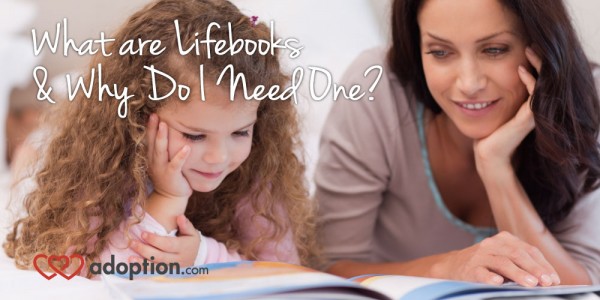Sitting in the rocking chair with my son on my lap, I read to him from a book. This isn’t an ordinary book, however. This is a Lifebook; a book all about him. This book begins with pictures and the story of his birth parents and gives child sensitive information regarding their path to creating an adoption plan. There are many reasons birth parents come to the decision to place their child for adoption. In some situations a child may be adopted at an older age or go through foster care. Whatever the reason, a Lifebook is a a historical book about your child.
What is a Lifebook?
1. This book will tell the story of your child.
2. A Lifebook is a way for a child to learn the facts, understand his roots, discover and embrace identity and have a special story he can always come back to.
3. A Lifebook is private and sacred to the child.
4. A Lifebook doesn’t have to end at adoption.
5. A Lifebook often has more words than pictures.
What a Lifebook is not.
1. A Lifebook is not the baby book that sits on your coffee table for guests to thumb through.
2. A Lifebook is not your story. It is not about the loss you felt leading up to adoption, how you felt during the adoption process or how happy you were when your child joined your family.
3. A Lifebook is not always a perfect picture, but it is true.
4. A Lifebook is not a journal of your family, but a journal of your child’s family. That includes as much birth family as you can provide information on.
5. A Lifebook is not an easy project, but it is an important one.
A Lifebook may include medical history, a biological family tree, a baseline story surrounding the need for adoption placement and pictures from the past. While it is alright to include pictures and information on your current family, remember that this is your child’s story. This is a book that he will cherish and be thankful that you made for him. There may be times he wants to pull the book from the shelf every day and read from it. He may go long periods of time of showing no interest in the book what-so-ever. Then you might think he has forgotten about it, only to find him under the covers reading it with his trusty flashlight.
A basic part of human nature is craving knowledge. It is what drives civilization forward. It is what keeps the world progressively coming up with new information and technology. An adopted child has a need to be fulfilled; knowledge of his identity. This Lifebook can guide him through that journey to providing information you gave to him in a way he can learn and understand. It can be expanded upon as he grows and act as a starting point for him to come to you with more questions. It opens communication about his adoption. A Lifebook will show your child that you are not threatened by his birth family or his curiosity to know more and that you will not be hurt by his questions.
There are many formats to create a Lifebook. It can be crafty and ornate or it can be simple and handwritten. You can use scrapbooking or online photo books. Many websites offer free downloadable pages and resources to help guide you if you are struggling. Even if you haven’t already created one for your child, it’s never too late. An older child may gain a great deal of healing by creating a Lifebook together with you!
What is the most important piece of information you feel should be included in a Lifebook?


